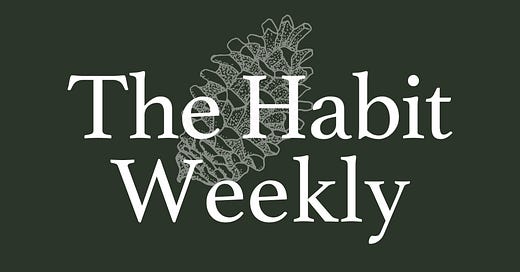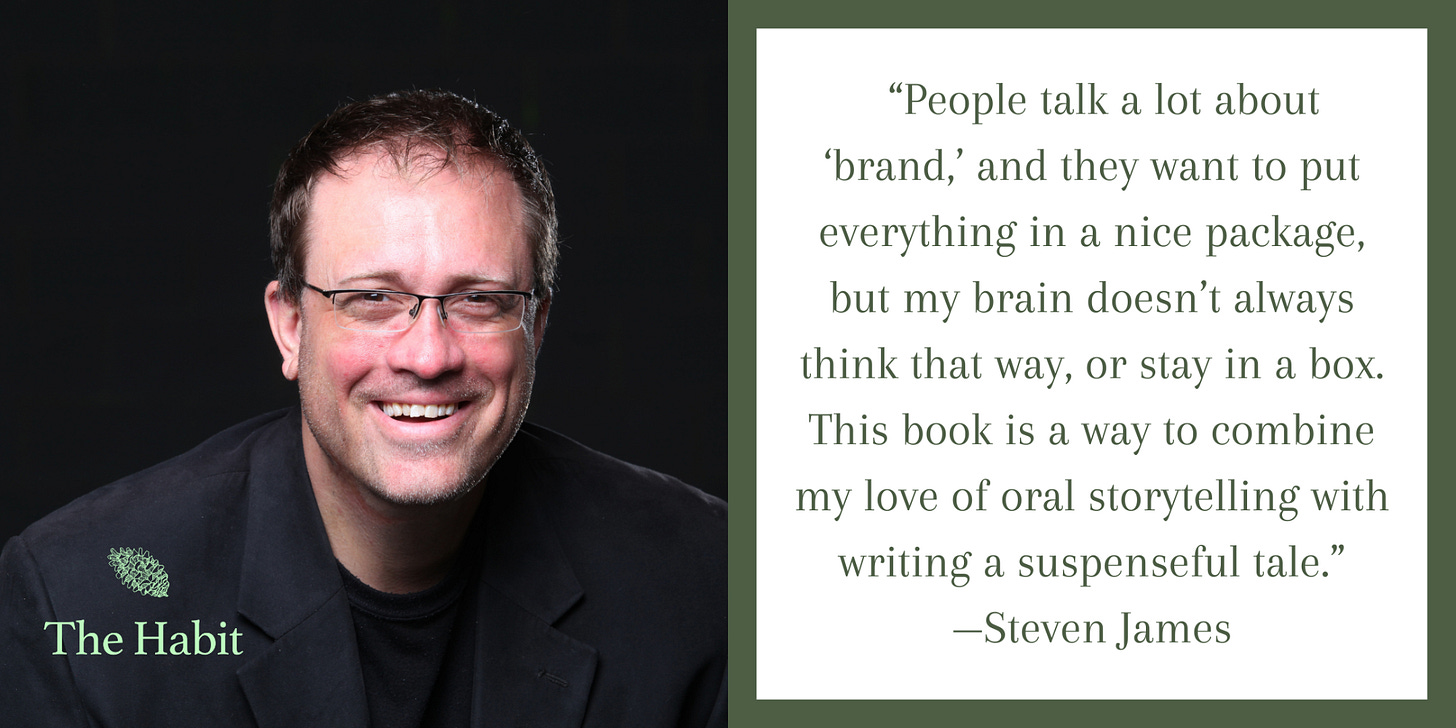I’m up to my elbows in preparations for Hutchmoot and my pre-Hutchmoot writing seminar, so I’m queueing up another archived episode, from 2018. It’s a good one.
Also, I thought you would be interested in something that my friend Rebecca Reynolds at Sky Turtle Press is putting together—Old Stories: An Appalachian Anthology. Rebecca and friends are collecting old stories from Appalachia, creating an anthology that can be used to raise funds for the parts of southern Appalachia that have suffered so much from Hurricane Helene. Rebecca writes,
We don’t need money at this time. We just need stories.
So, please help us find the storytellers.
Maybe ask your grandparents if they would have time to sit and share one of the old tales. Or send us one that you remember.
We will also be inviting a few storytellers to join us for a day of recording their stories in Jonesborough, TN, so if you might be available to join us for such an event, please let us know.
Thank you for keeping our beloved Appalachia in your heart as we recover.
(And please share this post, if you feel it might be encouraging to someone you know.)
Find out more by watching this beautiful video (or by listening to this week’s Habit Podcast which includes a conversation with Rebecca Reynolds after my conversation with Steven James.
I often tell people that Flannery O’Connor once wrote “the eye is an organ of judgment.” Turns out, she never wrote that. When I typed “the eye is an organ of judgment” into the Google machine, the only thing that came back was a picture of me, from a previous issue of The Habit in which I had misquoted Flannery O’Connor. Sorry about that.
In my defense, however, I will say that my misquotation is a pretty good distillation of something that Flannery O’Connor actually did write, in her essay “Writing Short Stories,” which you can find in Mystery and Manners:
For the writer of fiction, everything has its testing point in the eye, and the eye is an organ that eventually involves the whole personality, and as much of the world as can be gotten into it. It involves judgment.
She goes on to say that the student-writer is often so interested in thoughts and emotions that he neglects the concrete and sensory details where storytelling actually happens:
He thinks that judgment exists in once place and sense-impression in another. But for the fiction writer, judgment begins in the details he sees and how he sees them.
The eye is an organ of judgment. O’Connor is specifically talking about fiction-writing in these passages, but she could be talking about any kind of writing. In fact, she could just as easily be talking about everyday life.
A familiar scenario will demonstrate what I mean: You are at a stoplight, waiting for a left-turn arrow. You’re the fifth car in line, but you know from experience that six, sometimes seven cars usually make it through before the arrow turns, so you’ll be fine. You get your arrow. The first car starts through the intersection, then the second and the third. You take your foot off the brake to move forward. Then you put your foot back on the brake because you realize that the fourth car, the one in front of you, isn’t moving. You see that the driver in front of you is looking down at his phone. You give a little tap on your horn. Nothing. The turn-arrow turns yellow. You lean on the horn. The driver ahead of you jerks his head up as if from a deep sleep and lurches forward and through the intersection just as the light turns red again. You, meanwhile, are left to wait for the next arrow.
Consider how many judgments you make in that moment. You judge that driver’s character and his home-raising. You reach conclusions regarding his ability to consider the feelings of others. You wonder how a person with such convoluted priorities could ever hold a job or otherwise contribute to society.
How did this cascade of judgments start? It started with your eyes. You saw an arrow turn green. You saw three cars move. You saw a fourth car not move. You saw that the driver of that fourth car was looking down rather than looking ahead (you didn’t, by the way, even see a mobile phone). Those few visual stimuli were more than enough. The eye is an organ of judgment.
This brings us to the oft-repeated writing advice, “Show, don’t tell.” What’s the difference? “Showing” is simply presenting to your reader what she would see and hear (and perhaps smell, taste, and touch) if she were present in the scene where the action is happening. “Telling” is everything else–explaining, editorializing, describing what’s going on inside a character’s head, providing backstory, summarizing action, etc. Imagine there was a video camera set up in the room where the action takes place. Anything that could appear in the video is showing. Anything you write that couldn’t appear in the video is telling.
Here are two samples describing the same event; the first is all showing, and the second is mostly telling.
Sample 1 (all showing):
When the light turned green and the cars started to move, the car in front of me didn’t go anywhere. The driver just sat there, his head pointed down toward his lap, until I honked my horn…Sample 2 (mostly telling):
When the arrow turned green and the cars started to move, the jackass in front of me just sits there, gawping at his phone as if it’s the Holy Grail or something, as if there’s not a whole line of people behind him who might have places to be. But God forbid that he should have to wait until he gets wherever he’s going to look at his texts or update his MySpace page or watch his cat videos or whatever he’s doing up there while the rest of us sit there and wait for him to notice that the world hasn’t stopped turning.
In Sample 2, everything before the first comma is showing–what anybody at the red light would see–and everything after the first comma is telling–interpretation and commentary and speculation by the writer.
The idea behind the “Show-Don’t-Tell” principle is that showing more closely approximates the way experience comes to us in real life. We gather information through our senses, then our logic and judgment go to work making sense of those inputs. When the person in front of you holds up a line of cars because he’s looking at his phone, you don’t need a narrator to tell you that he’s a self-absorbed jackass. You take in the sensory data (green arrow, no movement, driver looking down instead of looking at road), and you reach your own conclusion. And, by the way, almost everybody presented with that sensory data would reach a similar conclusion.
When you choose to show rather than tell, you are trusting that your readers’ judgment apparatus is intact, and that she will reach the appropriate conclusions without being told what conclusions to reach. But you are also trusting your own ability to show the right things that will lead the reader to the appropriate judgments. Telling is a shortcut: Here’s what I want you to think about this.
One important thing to note about showing and telling: it is hard to resist telling when you’re really trying to make a point. You want to leave sensory language behind and instead use emotional language, or maybe do a lot of explaining to drive your point home. But as counterintuitive as it sounds, writing tends to be more emotional when, instead of telling readers what to feel, you provide them with the kind of experience that evokes the emotion you want them to feel. In the two samples above, the second, more “tell-y” sample may have been more entertaining and interesting, but if you want to evoke the righteous anger we all feel when somebody else is texting and driving (a righteous anger that we don’t feel, by the way, when we text and drive), you’re better off writing something more like Sample 1, which gives the reader more space to exercise his own judgment.
Along the same lines, if you’re trying to persuade, readers are more easily persuaded when they think they’ve reached a conclusion on their own, by exercising their own judgment, than when you tell them what to think. In both his fiction and his essays, Wendell Berry makes the case for agrarian values and rural living. When I read his essays, in which he is being openly persuasive, I want to argue back: Well, Wendell Berry, I’m glad you like living in rural Kentucky, but I quite like living where I can get decent Vietnamese food. When I read his novels, on the other hand, I want to sell out and move to rural Kentucky.
But I digress. Let us return to showing and telling. While most of us need to do more showing and less telling, it’s not at all true that you should always show and never tell. Some of the most memorable writing you’ll ever see is very tell-y (even in the two samples above, I think the second, tell-y sample is more memorable than the first). I often tell writers, however, that the way to earn the right to tell is by showing first.
If you want to read a story that is all showing and no (or almost no) telling, check out Hemingway’s “Hills Like White Elephants.” It might leave you hankering for some good, old-fashioned telling. I will say this, though: every time I read that story, I like it a little better. For better or worse, telling tends to bring more meaning to the surface, whereas showing allows for more discovery by the reader.
For further reading: The best thing I’ve ever read about showing and telling is the chapter, “Why You Need to Show and Tell,” in Alice LaPlante’s creative writing textbook, The Making of a Story.
Four-Week Online Workshops in October and November
This fall I'll be running two workshops—one for fiction and one for memoir/creative nonfiction. In these four-week intensives, you will work on a single story/essay/chapter (5000 words max) for the whole four weeks, writing and rewriting, getting feedback from me as well as from your fellow writers. You can work on something you’ve written already, or you can write something new for the workshop. Each workshop is limited to 6 participants. The fiction workshop will run 10/21-11/15, and the memoir/nonfiction workshop will run 11/4-12/6 (with a break the week of Thanksgiving).
Virtual Writing Rooms on Monday Tuesday, Thursday, and Friday
Tuesday afternoon: Writing with Dorothy Sayers (included in membership)
Writing Prompt: Writing with Dorothy Sayers exercise
New in The Habit Portfolio: “It Is Not Good That Man Should Laugh Alone,” an essay by Elizabeth Harwell
There's a place for you in this vibrant community of writers. Find out more about The Habit Membership here.
Steven James Loves Appalachia. (So Does Rebecca Reynolds.)
Steven James has written and published about twenty books in the last couple of decades. Most of his novels and been thrillers. But with his new novel, Rift, he’s doing something completely new: young adult Appalachian folktale horror. Steven has lived in the southern Appalachians since the 1990s.
The part of East Tennessee where Rift is set was hit really hard by Hurricane Helene a couple of weeks ago. Steven’s publisher, Rebecca Reynolds of Sky Turtle Books, also lives in the region. She is putting together a project to collect old stories from Appalachia, creating an anthology that can be used to raise funds for the area.
She needs help finding the storytellers and their stories. Part 2 of this episode is a short conversation with Rebecca Reynholds about the Old Stories project.
Here's a video about The Old Stories: An Appalachian Anthology.






